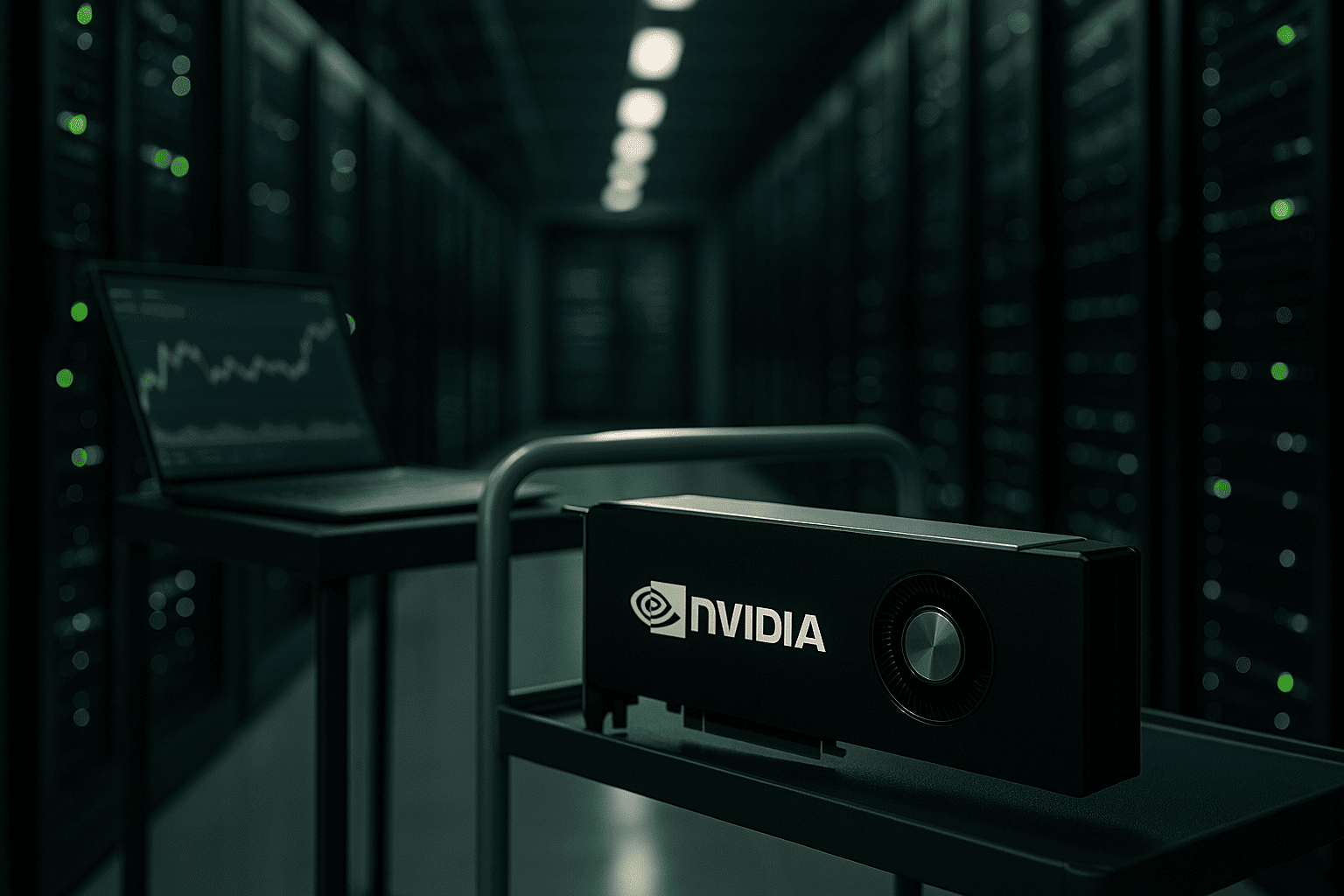Nvidia Races Toward $5 Trillion as AI Orders Swell
By Tredu.com • 10/29/2025
Tredu

Why Nvidia is sprinting toward a $5 trillion market cap
Nvidia shares pushed to fresh highs after reports that the company was on track to open above a $5 trillion market value, an unprecedented level for any public company. Traders cited premarket strength, follow-through from earlier record closes, and a drumbeat of AI announcements from partners and customers. Reuters noted the stock was set to open near or above the threshold, while multiple outlets tallied intraday market value around $4.9 trillion to just shy of $5 trillion as buyers leaned into the AI build-out story.
Orders, product cadence, and the AI build-out
The near-term fuel is order visibility and product cadence. Coverage pointed to large, multi-quarter commitments for AI accelerators and a slate of next-gen systems slated for hyperscalers and governments. Analysts and reporters highlighted management commentary around massive chip orders and plans tied to national supercomputing capacity, reinforcing the idea that Nvidia’s book of business stretches well beyond a single upgrade cycle. That narrative, together with continued momentum from spring and summer launches, has kept sentiment strong.
Records on the tape, and what moved today
Recent sessions saw Nvidia close at all-time highs and add hundreds of billions in market value in a single day, bringing its capitalization to the cusp of $5 trillion. Reports emphasized a 4–5 percent pop on fresh deal headlines and product updates, plus incremental analyst enthusiasm that framed upside to out-year revenue. These gains arrived even as peers hit their own milestones, underscoring how AI spending has concentrated around Nvidia’s platform.
What a $5 trillion market cap implies
At $5 trillion, investors are underwriting an extended AI infrastructure cycle and a durable share of accelerator, software, and networking economics. Barron’s and Bloomberg analyses argued that if data-center AI spend trends toward the multi-trillion-dollar range later this decade, revenue and earnings paths could justify the level. That thesis assumes robust supply, steady unit pricing, and continued platform lock-in across tools and ecosystems.
The demand side: cloud, enterprises, and governments
Demand signals span U.S. hyperscalers, Asian platforms, and sovereign customers. Reuters and other outlets flagged fresh orders, with some reports citing sizable government supercomputing plans and partners lining up capacity for 2026 and beyond. The mix matters: cloud consumption can be lumpy, but sovereign and long-term enterprise contracts add visibility that supports factory planning and supply-chain investment.
Supply, competition, and the upgrade drumbeat
Supply has tightened at times, yet successive product waves have increased effective output through efficiency gains. Competitors are pushing hard with custom and merchant silicon, but investors still credit Nvidia with a lead in hardware plus software. The roadmap tempo, together with CUDA and ecosystem gravity, remains central to the bull case that Nvidia races toward $5 trillion market cap as AI orders swell.
Valuation checks: what the street is modeling
Sell-side work wrestles with two pivots: where annualized revenue peaks and how fast margins normalize. Some scenarios sketched by major outlets imply revenue that could scale well beyond current consensus if AI capex runs hotter for longer. Others stress that multiple compression is possible if growth slows or if competition erodes pricing. Either way, the market is paying up for visibility into multi-year AI budgets that still look resilient.
Risks the rally must outrun
Three risks dominate. First, supply or power bottlenecks that cap deployment. Second, policy or export twists that limit addressable markets. Third, a digestion phase if customers pause to absorb recent capacity. Reuters has already flagged how headlines around export permissions and geopolitics can swing sentiment intraday. For now, order momentum and product cadence have outweighed those negatives, but positioning is crowded, which can sharpen pullbacks.
Read-through for the broader market
Nvidia’s surge has outsized index effects and sets a tone for peers tied to AI infrastructure, from memory and packaging to power and cooling. Bloomberg noted the stock’s contribution to S&P 500 gains year to date, a reminder that leadership remains narrow. If capex keeps compounding, second-derivative beneficiaries could see estimate upgrades; if not, risk may rotate back toward software or non-AI cyclicals as investors rebalance.
What would confirm a durable $5 trillion plateau
Watch for three signals. One, backlog disclosures or partner commentary that extend visibility into 2027. Two, evidence that new platforms lift performance per watt enough to ease power constraints at scale. Three, sustained software monetization that complements hardware cycles. With those in place, today’s sprint can become a plateau, not a peak.
Strategy lens for investors
Long-only allocators tend to scale exposure on pullbacks toward prior breakout zones, while hedge funds trade around catalysts such as partner events, supply updates, and major customer announcements. For risk control, many pair core positions with downside hedges when implied volatility is cheap relative to realized swings. The central question is unchanged: does the AI adoption curve still steepen, or does it glide. The answer will decide whether Nvidia’s valuation consolidates near $5 trillion or overshoots.

How to Trade Like a Pro
Unlock the secrets of professional trading with our comprehensive guide. Discover proven strategies, risk management techniques, and market insights that will help you navigate the financial markets confidently and successfully.


